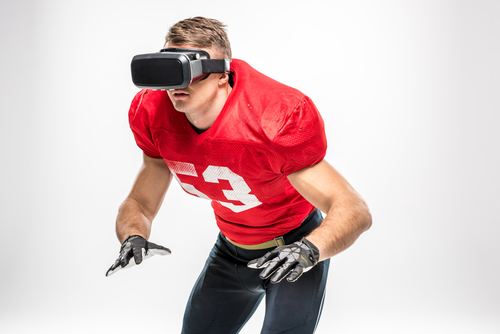Recently, there’s been a push to prevent head injuries associated with contact sports. While sports organizations have instituted rules to prevent such injuries, there’s another approach that appears to be even more effective: Virtual reality (VR) headsets, which are being used to diagnose head injuries, including concussions. Just this year, the NFL acknowledged that repeated concussions on the gridiron are linked to chronic traumatic encephalopathy, or CTE, a degenerative condition. Quite often, if a CT scan doesn’t show any bleeding after traumatic head injury, the patient isn’t treated; but this doesn’t mean there’s no concussion. Here’s a look at VR tech’s application in the medical field:
EYE-SYNC
Jamshid Ghajar is a clinical professor of neurosurgery at Stanford. As the director of the Stanford Concussion and Brain Performance Center and president of the Brain Trauma Foundation in New York City and Palo Alto, he launched his first virtual reality device in 2006. This year, it finally got FDA approval. When a person suffers a concussion, his or her “predictive attention performance” — a metric used to determine cognitive and motor function — is compromised. Ghajar’s device, called EYE-SYNC uses a visual stimulus to check whether the ability to make spatial and temporal predictions has been affected after a traumatic injury. By using a pair of portable VR glasses with built-in eye trackers, doctors, coaches, and trainers can diagnose concussions sooner and pretty much anywhere — from the workplace to the football field. The test takes just 30 seconds and results are available in less than one minute.
Samsung Gear VR and BrainBand
VR headsets are also being used in physical therapy practices to monitor patients. Many of the techniques used in traditional physical therapy, including ocular and vestibular therapy, are enhanced with room-scale VR. Devices such as the Samsung Gear VR, which is compatible with the Samsung Galaxy S7 edge, can be used to diagnose head injuries. Additionally, Samsung Australia is working with athletes to help prevent head injuries on the field with a headgear prototype. The headgear, called BrainBand, monitors head trauma in a range of sports and alerts referees, coaches and medics with real-time alerts. CTE brain damage can cause a loss of movement skills, aggression, problems with memory, depression and anxiety, dementia, and, in some scenarios, suicide or death. Unfortunately, CTE can only be diagnosed post-mortem. Samsung’s headgear prototype was created to keep athletes safe and healthy.
BrainGainz VR App
The University of Arizona has created a VR app in attempt to address concerns associated with concussions in college football. The VR app, called BrainGainz, puts the VR user in a college football arena, challenging him to successfully complete a punt return. After the subject experiences a handful of successful returns, the VR app makes sure that the user is virtually hit with a concussion-level force by a defensive player. After the hit occurs, the user can choose to sit out or continue playing. At the same time, the app simulates visual disorientation that’s similar to a real concussion. Serious head blows and injuries often go unreported, but this app is an attempt to get athletes to think twice before shrugging off a concussion. Since its inception, the app has been introduced to the Mind Matters program, an initiative that researches and encourages dialogue about concussions.




